Keely
"Like poles do not repel each other, simply because there is a perfect sympathetic equation between them; the same in unlike poles. If a differentiation of 33 1/3 against 100 is established between them, whether like or unlike, they become attractive to each other. They become repellent after differentiating them, 66 2/3 of the one against 100 of the other, by sympathetic vibration." [Vibratory Physics - The Connecting Link between Mind and Matter]
Russell
"The two poles are, therefore, poles of still Magnetic Light around which the divided electric pairs can manifest their light of motion. The two poles, thus divided, have within them the desire to be united as one, by uniting the two divided pairs of conditions as one. In this manner the two poles which have united, become the common center of gravity of the whole gravity shaft of the mass controlled by it." [Atomic Suicide, page 182]
Schauberger
"All motion consists of two components. One component serves inwardness (internalisation) and the other outwardness (dispersion). Both preconditions for motion regulate the eternal flow of metamorphosis (panta Rhei)[1]." [Schauberger, Implosion Magazine, No. 57, p.5.
[[1] panta Rhei: process of change, everything flows
Hughes
Major key-notes developing by sevens veering round and advancing and retiring in musical clef
—The use of the two poles F#-G? in tones and colours
—Retrace from Chapter V. the tones in musical clef as notes, each note still sounding its tones, leading the ear to its harmony, . . 25 [Harmonies of Tones and Colours, Table of Contents2 - Harmonies]
Minor key-notes developing by sevens, veering round and in musical clef below
—The use of the two poles D#-E? is seen, . . . . . . . . . . 35 [Harmonies of Tones and Colours, Table of Contents3 - Harmonies]
In a few remarks on "Tones and Colours," inserted in the Athenæum of February 24, 1877, I alluded to the great loss I had sustained by the sudden death of Dr. Gauntlett. I often retrace with grateful remembrance the kind manner in which he examined this scheme when it was but crude and imperfect; with a very capacious intellect, he had a warm and generous heart, causing him to think over with candour any new ideas placed before him. He was of the greatest use to me, by corroborating the points which I had gained. I remarked to him one day, "I find that, of the double tones, F# is a key-note and G? a root." He replied, "You must have a right foundation to work upon, or you would never have ascertained the necessity of the two poles; you have gained the double tones correctly, and the development of harmonies without limit. On this point I have always felt the failure of the laws followed by the musician." [Harmonies of Tones and Colours, Dr. Gauntletts Remarks1, page 13]
In the musical clef, the sixth and seventh notes from the fundamental key-note C (F and #F) are repeated, so that the use of the two poles (#F and ?G) may be clearly seen, and that the notes and colours precisely agree. [Harmonies of Tones and Colours, Diagram III - The Major Keynotes Developing by Sevens, page 25a]
The following table shows the regularity of each seven of the twelve key-notes ascending by fifths, and the use of the two poles is again seen. The key-notes and their trinities are closely linked into each other, the three highest notes of the lower fifth key becoming the three lowest of the higher fifth key, and the four lowest becoming the four highest in an octave higher. The twelve keys, rising in each note a tone higher and descending a tone lower, cause the meetings by fifths. Having examined the table, we may strike the keys by fifths as written in the musical clef, beginning with the lowest C in [Harmonies of Tones and Colours, Diagram VII - The Modulating Gamut of the Twelve Keys1, page 29]
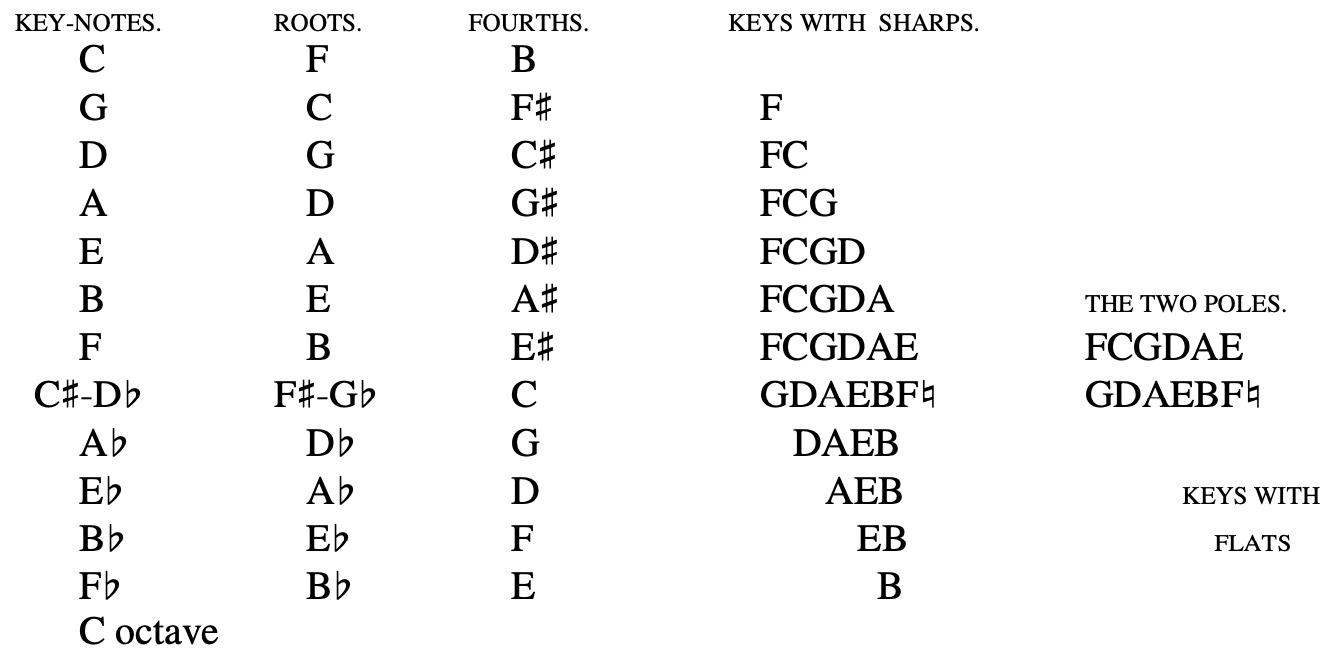
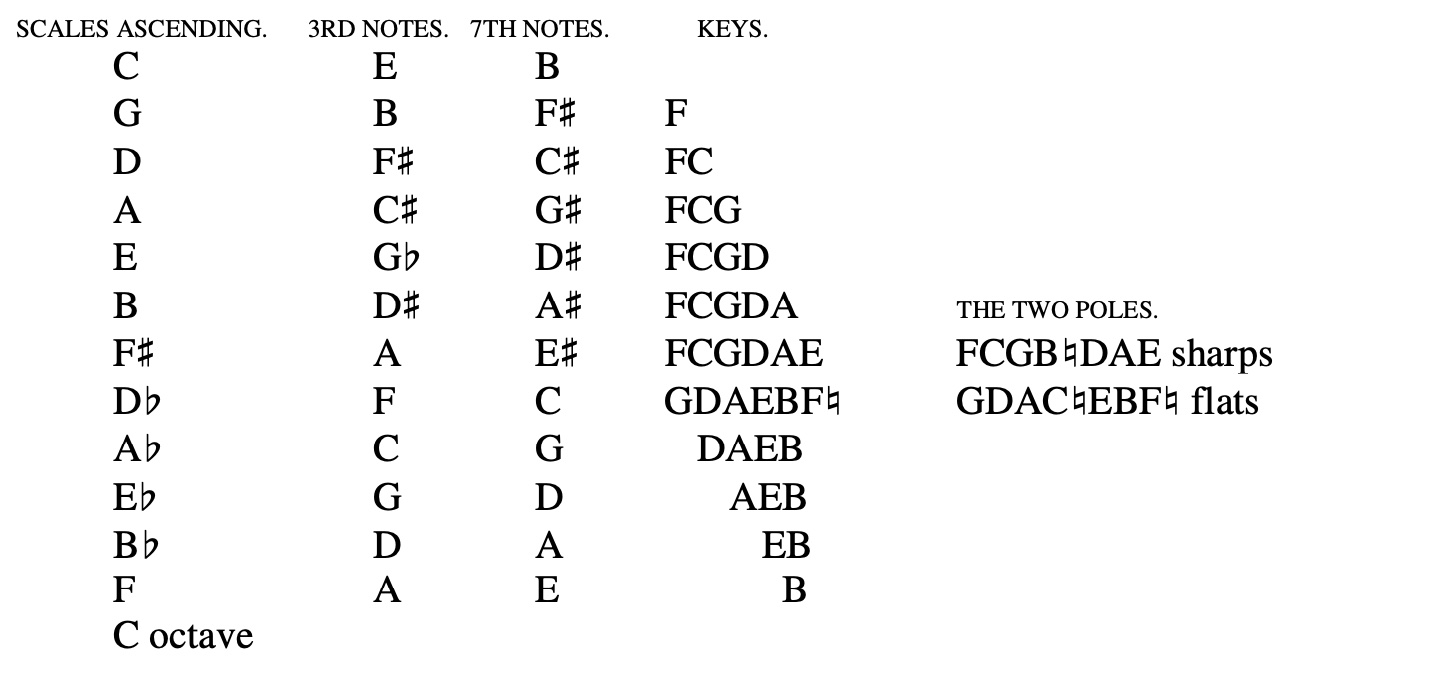
In the musical clef the sixth and seventh notes from A, the fundamental minor key-note, are repeated, in order to show the use of the poles D#-C?, and that the colours agree. The use of the two poles, both in the major and minor series, is strikingly evident. [Harmonies of Tones and Colours, Diagram X - Minor Keynotes Developing by Sevens, page 35a]
Below, the D# and E? are repeated, to shew the use of the two poles. [Harmonies of Tones and Colours, First Circle are 7 Minor Keynotes, page 35c]
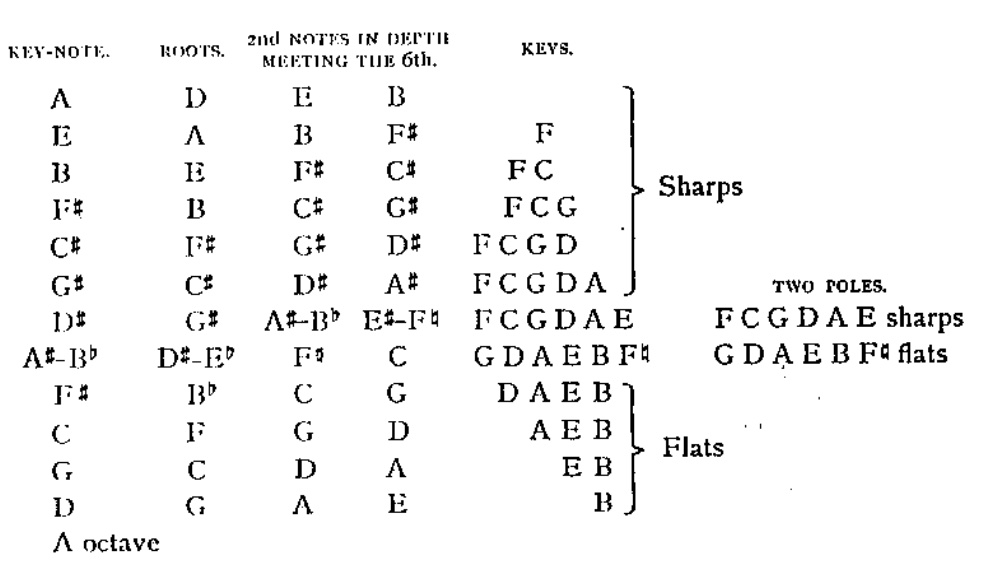
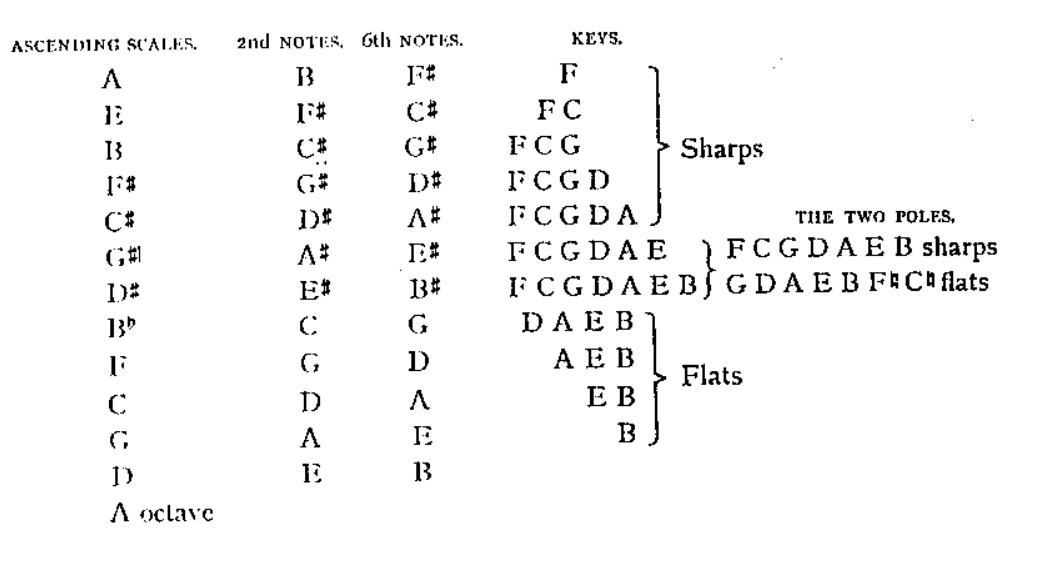
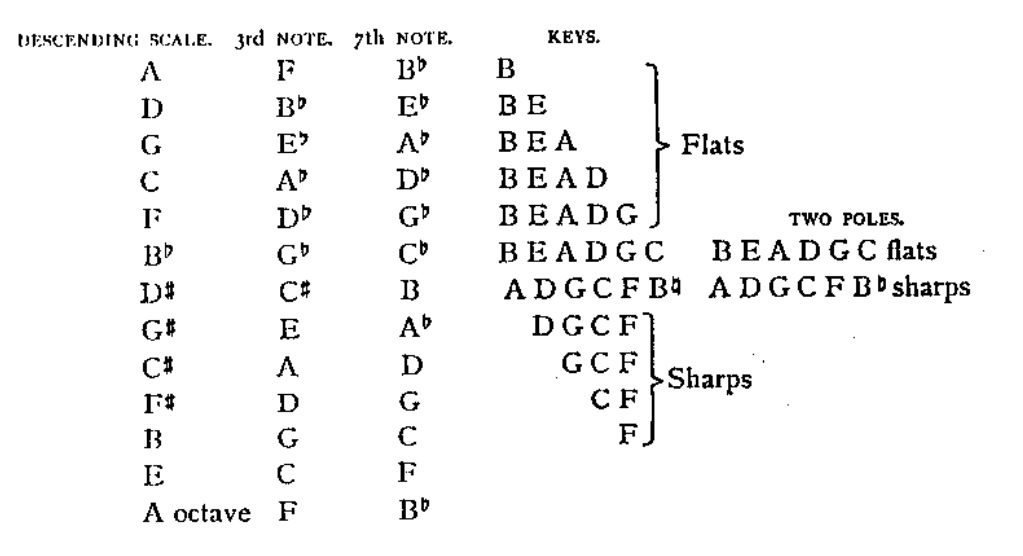
See Also
369
15.16 - Controlling Ether by Will Force
3.17 - Magnetic Electric Poles
3.20 - Poles within Poles
7.8 - Matter and Spirit are Opposite Poles
circle of control
complementary pair
Controller of all action
curvature of gravity control
direction of gravity control
divided and extended pairs
Dominant as Controller
Dominant
double pole
dual chord
dual force
dual genetic scale
dual note
dual sex condition
dual system
Dual
duality in unity
duality lines of indication
duality of D
duality of response
Duality
Father-Mother
Figure 15.05 - Nine Pairs of Gravity Poles
Figure 18.04 - Two Minds - Split and Whole
Figure 18.05 - Two Power States of Mind Force
Figure 6.9 - Russell depicts his waves in two ways
Figure 7B.17 - Multiplying Force to Poles of a Bar Magnet
Figure 7B.18 - Four Poles of a Bar Magnet
gravity center of control
Law of Duality
mate-pairs
Neutral Center
omnipresent gravity control
One Universal Controlling Medium
pair of fifths
pole
Poles in Harmonies
Ramsay - CHAPTER V - THE LAW OF DUALITY
Ramsay - Duality as a Test-agent in Composition
Ramsay - Duality as in the Greek Modes
Ramsay - Mysterious Depth of Duality of Music
Ramsay - PLATE XXIX - Illustrations of the operations of DUALITY in various spheres
Ramsay - The Mystery of Duality
self-duality
Sex
three poles
two centers
two controlling points of stillness
two dividing poles
two lights of the spectrum
two opposed electric forces
two points of stillness
two poles
